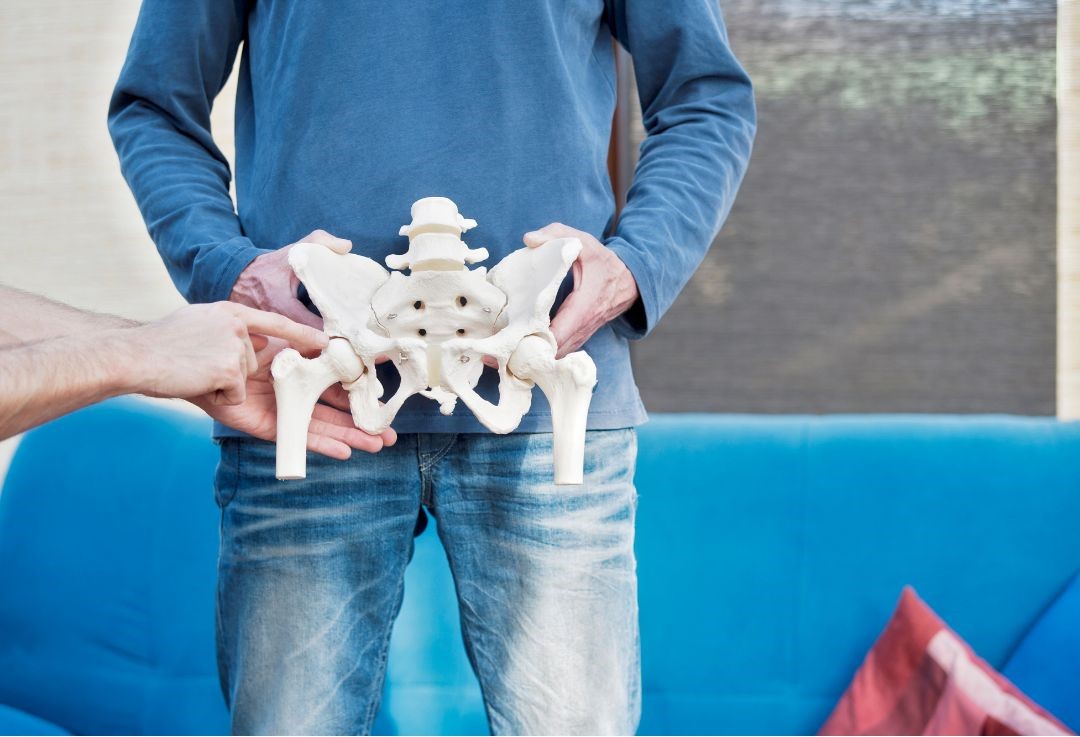Osteoarthritis is not fun. This month we’re examining it deeply, focusing on osteoarthritis of the hip. If that’s not related to your aches and pains, we’re still here to help. Call us anytime on (03) 8360 8363 to make an appointment at Altona Meadows Osteopathy. We’re here to help with whatever body issue bothers you – not just hip osteoarthritis.
What’s Hip Osteoarthritis?
First things first, let’s understand what hip osteoarthritis is. Imagine your hip joint as a well-oiled machine with smooth cartilage cushioning the bones. Hip osteoarthritis happens when that cartilage wears down over time, causing the joint to start playing up. It’s like your once-silky-smooth ride turned into a bumpy roller coaster.
Why Does It Happen…
So, why does this happen? Well, it’s mostly due to the natural aging process – as we get older, our joints endure wear and tear. But it’s not just age; genetics, injuries, and strain (through lack of movement, obesity, grind….) can also play a role. When the cartilage deteriorates, it can lead to pain, stiffness, and limited mobility.
Now, let’s get into the good stuff – how to deal with hip osteoarthritis and preserve, and even regain, mobility.
Lifestyle Changes for Hip Osteoarthritis:
Mindful Movement: One of the best things you can do is to keep moving. It might sound counterintuitive, but gentle, low-impact exercises like walking, swimming, and tai chi can work wonders. They help to strengthen the muscles around your hip, providing extra support and reducing the stress on the joint.
Watch Your Weight: Your hip joints must carry the load, quite literally. Excess weight puts extra pressure on them, which can accelerate the cartilage breakdown. Shedding those extra pounds through a balanced diet and exercise can make a world of difference. (That’s easier said than done for most of us – know that you’re not alone and reach out for help if you need it.)
Ergonomics: Pay attention to your daily activities. Are you sitting or standing for prolonged periods? Try to maintain good posture and consider using assistive devices like a fit-ball for a chair, a stand-up desk, or a cane or a walker – whatever is right for you. These small changes can reduce strain on your hips.
Footwear Matters: Believe it or not, your choice of shoes can impact your hip health. Choose supportive, cushioned shoes that provide stability. This can alleviate some of the pressure on your hip joints when you’re on your feet.
Exercise for Hip Health: We’ve already touched on the importance of exercise, but let’s break it down further. When dealing with hip osteoarthritis, there are three main types of exercise to consider:
Strengthening Exercises: These focus on building up the muscles around your hip joint. Think leg lifts, squats, and resistance band exercises. Strong muscles provide better support to your hip, making it less likely to ache.
Flexibility and Range of Motion Exercises: These aim to improve your hip’s mobility. Simple stretches can do wonders, like the butterfly stretch or knee-to-chest stretches. These keep your joints limber and reduce stiffness.
Aerobic Exercise: Activities like swimming or cycling are fantastic for cardiovascular health and joint flexibility. They’re low-impact, making them easier on your hips while helping you stay fit.
Nutrition for Hip Health:
Your diet plays a significant role in managing hip osteoarthritis. Here’s what you should consider:
Anti-Inflammatory Foods: Incorporate foods rich in omega-3 fatty acids, like salmon and walnuts. These have natural anti-inflammatory properties that can help with pain and discomfort.
Calcium and Vitamin D: Strong bones are essential, so make sure you’re getting enough calcium and vitamin D. Dairy products, leafy greens, and fortified cereals can be your best friends here.
Stay Hydrated: Water is essential for overall health, including joint lubrication. Make sure you’re drinking enough throughout the day.
Osteopathic Care:
Now, let’s talk about how an osteopath can assist you on your journey to hip health. We are healthcare professionals who focus on the musculoskeletal system, which includes your bones, muscles, and joints.
Manual Therapy: Osteopaths use gentle, hands-on techniques to improve joint mobility and reduce muscle tension around the hip. This can provide relief from pain and enhance your overall mobility.
Personalised Treatment: Every person is unique, and so is their experience with hip osteoarthritis. We will tailor treatments to your specific needs, ensuring a personalised approach to managing your condition.
So, hip osteoarthritis might throw a few bumps in your path, but with the right approach, you can regain control of your life. Remember, it’s about taking small, manageable steps, staying active, maintaining a healthy diet, and seeking the professional care of one of the osteopaths at Altona Meadows Osteopathy when needed. Call us to make an appointment on (03) 8360 8363. By making these changes, you can keep those hips moving.
We hope you found this informative and helpful. If you did, why not follow us on social media? We’re on Facebook at Altona Meadows Osteo and Instagram @altonameadowsosteo and like to share anatomy trivia, health tips, exercise info, and only the occasional corny joke there. Till next time.
